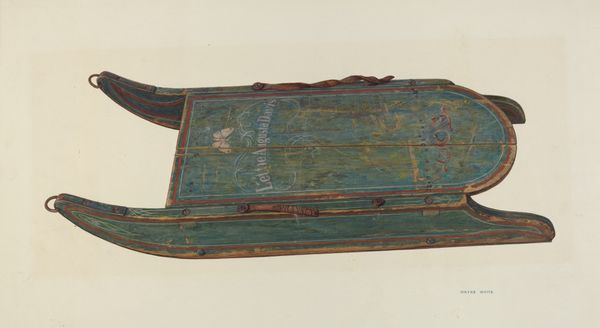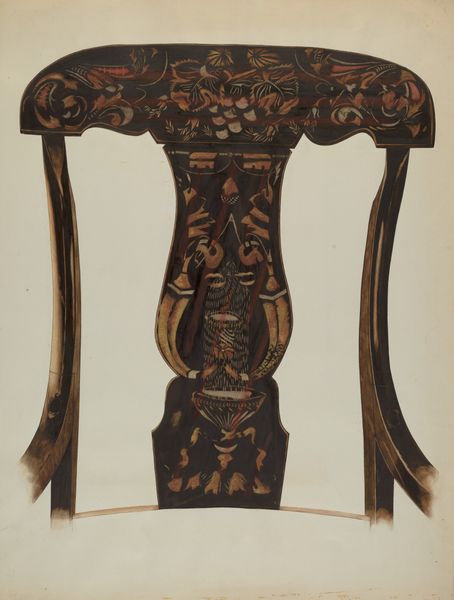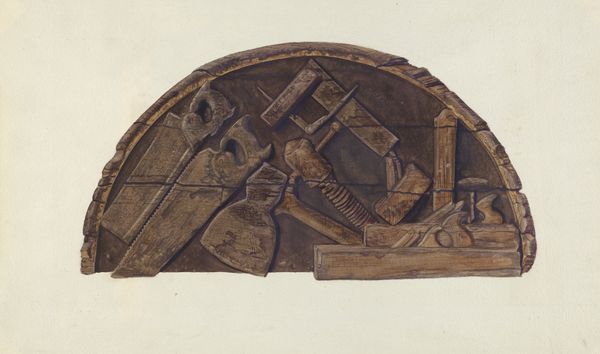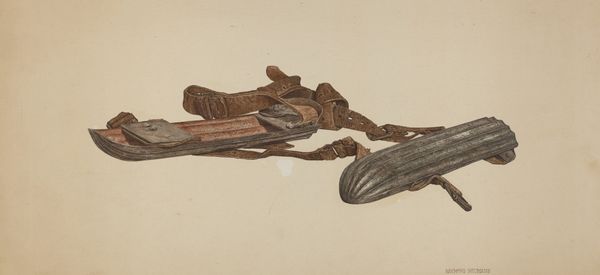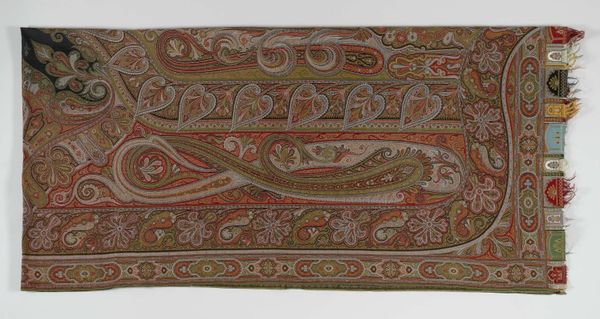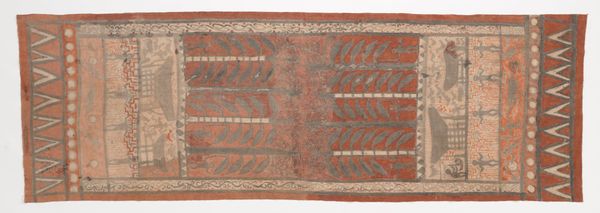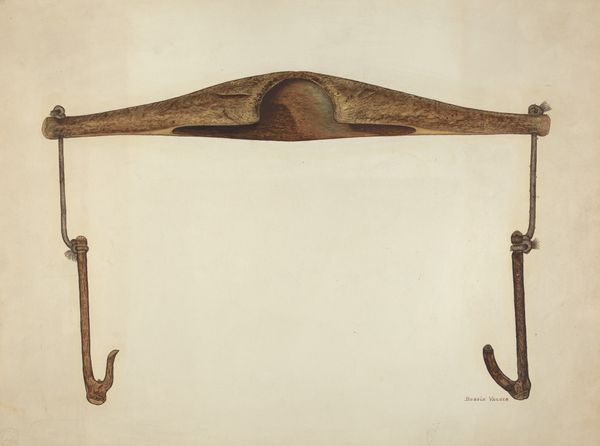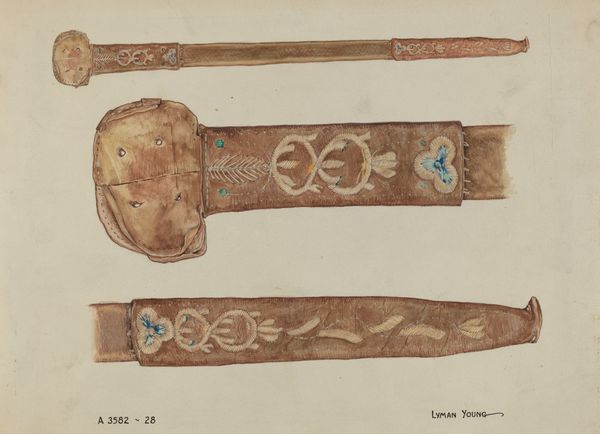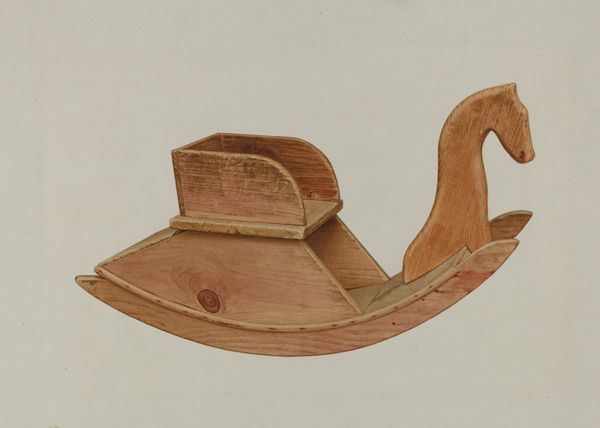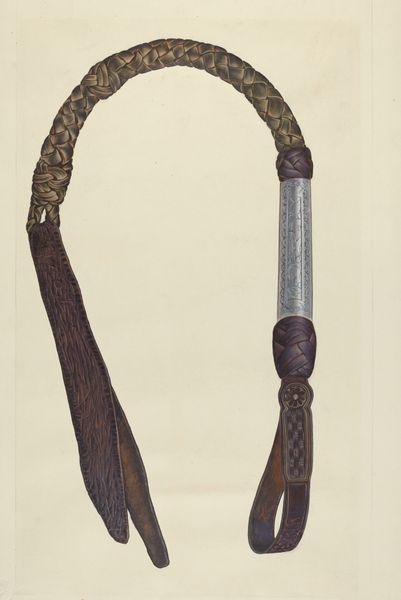
drawing
#
drawing
#
oil painting
#
academic-art
#
watercolor
Dimensions: overall: 52.5 x 68.1 cm (20 11/16 x 26 13/16 in.)
Copyright: National Gallery of Art: CC0 1.0
Curator: What immediately strikes me about this work is its incredible detail; it feels almost photographic in its realism, yet it clearly has the warm touch of hand craftsmanship. Editor: Absolutely. Cecil Smith’s “Double Rig Saddle,” created around 1938, presents us with more than just a rendering of a saddle; it presents a portrait of labor and the culture that produced it. It encourages us to reflect on American identity and class. Curator: Indeed. The deep browns and careful renderings evoke a sense of tradition and a perhaps romanticized vision of the American West. I notice how the tooling on the saddle depicts foliage, in the way that nature itself becomes entwined in cultural production. We find symbolic relationships there. Editor: It's an object imbued with meaning, undoubtedly. I wonder about the intended audience during this period, during the height of the Depression, for whom this representation might offer solace, reaffirmation, or perhaps something more complex. The aesthetic here does engage in questions of race and social justice through a certain kind of nostalgic lens. Curator: Perhaps. The craftsmanship evident in the artwork serves as a powerful symbol of perseverance. The saddle as artifact itself, divorced from its inherent functionality, has this function for the viewer here. It’s more than leather and dye, though. It's also deeply embedded within a very particular cultural and historical narrative that we continue to grapple with today. Editor: Right, the iconography of the American West persists. And by deconstructing and examining it in pieces here, like the sections presented to the viewer on the surface of this work, Smith challenges us to think critically about its symbolism. This isn’t just any saddle; it’s a powerful object representing mobility, expansion, labor, class, and ultimately conquest. It leaves me to reflect on its cultural importance and where it leads us now. Curator: Precisely. This work sparks conversations that delve deeper into not only American culture, but how it portrays itself both internally and externally.
Comments
No comments
Be the first to comment and join the conversation on the ultimate creative platform.
